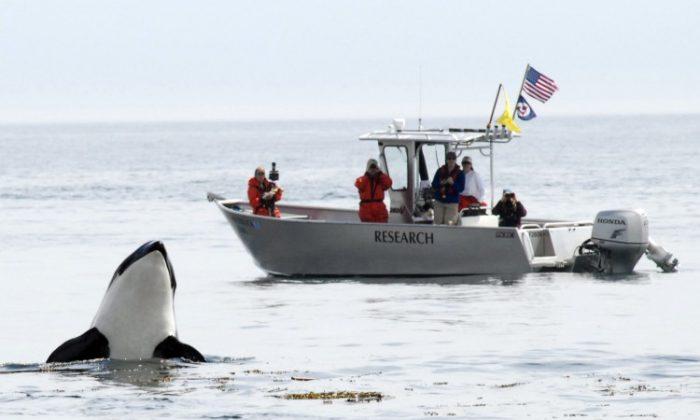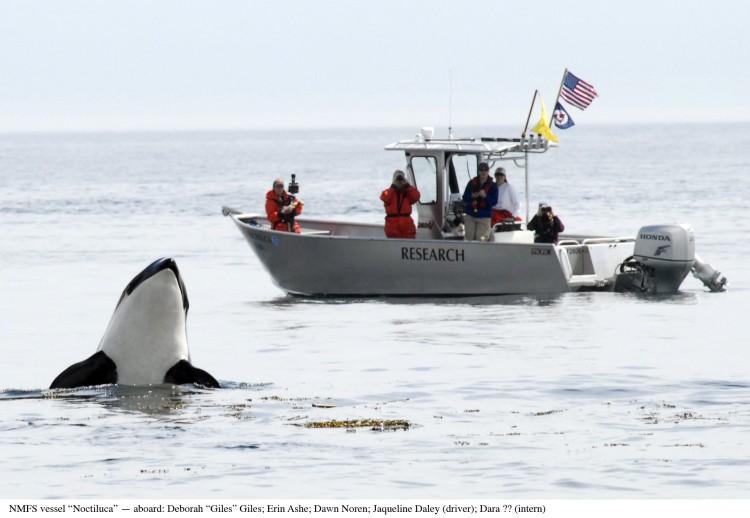In the Pacific Northwest, insufficient food stresses southern resident killer whales more than the numerous whale-watching boats in their environment.
Southern residents are found from Vancouver Island down to Washington state, unlike the northern residents, which occur from Vancouver Island northwards through Alaska, and transient orca populations which just pass through the area.
Between 1995 and 2001, this community of whales diminished in number by almost 20 percent, but the cause is unclear—inadequate food supply, boat proximity, and/or accumulated toxins.
A new U.S. study investigated two stress hormones in the group of endangered orcas that visits the Salish Sea between British Columbia and Washington state every summer to feed on Fraser River Chinook salmon.
Unexpectedly, the whales were best fed when they arrived at the Salish Sea in late spring, rather than during their five-month stay there, suggesting that they benefit from earlier salmon runs, such as at the mouth of the Columbia River.
However, when food is scarce, boats also become a stressor, showing that adequate nutrition protects the whales.
With the help of research dog Tucker, the team collected whale scat from a boat. The black Labrador Retriever has been trained to scent the fishy excrement.
[video]http://www.youtube.com/watch?v=gkOe-HrCjig[/video]
“This is the first study using scat-detection dogs to locate killer whale feces,” said study lead author Katherine Ayres at the University of Washington (UW) in a press release.
“The technique could be used to collect scat and study stress in other species of whales, always difficult subjects to study because the animals spend 90 percent of their time underwater.”
The team looked at glucocorticoids, produced when animals face immediate challenges like food shortage; and thyroid hormone, which matches metabolism to food availability.
During the summer, glucocorticoids went down due to an increase in Fraser River Chinook, even though this is when boat numbers are highest.
Meanwhile, thyroid hormone levels dropped with the salmon’s arrival, increased while food was abundant, and declined again as the salmon run finished.
“Behavior is hard to interpret, physiology is easier,” said study co-author Samuel Wasser, also at UW, in the release. “Fish matter most to the southern resident killer whales.”
“Even if boats are important to consider, the way you minimize that impact is to keep the fish levels high.”
Spring salmon as well as the Fraser River run may be important for the orcas, even though they are also important for fisheries.
“To support a healthy population of southern residents, we may need more salmon than simply the number of fish being caught by commercial and sport fishers,” Ayres said.
“We may need to open up historical habitats to boost wild salmon, such as what is being done with the Elwha River and what is proposed for the Klamath River.
“That may be the only way to support the historic population size of southern residents, which is ultimately the goal of recovery.”
The research was published online in PLoS ONE on June 6.
The Epoch Times publishes in 35 countries and in 19 languages. Subscribe to our e-newsletter.






